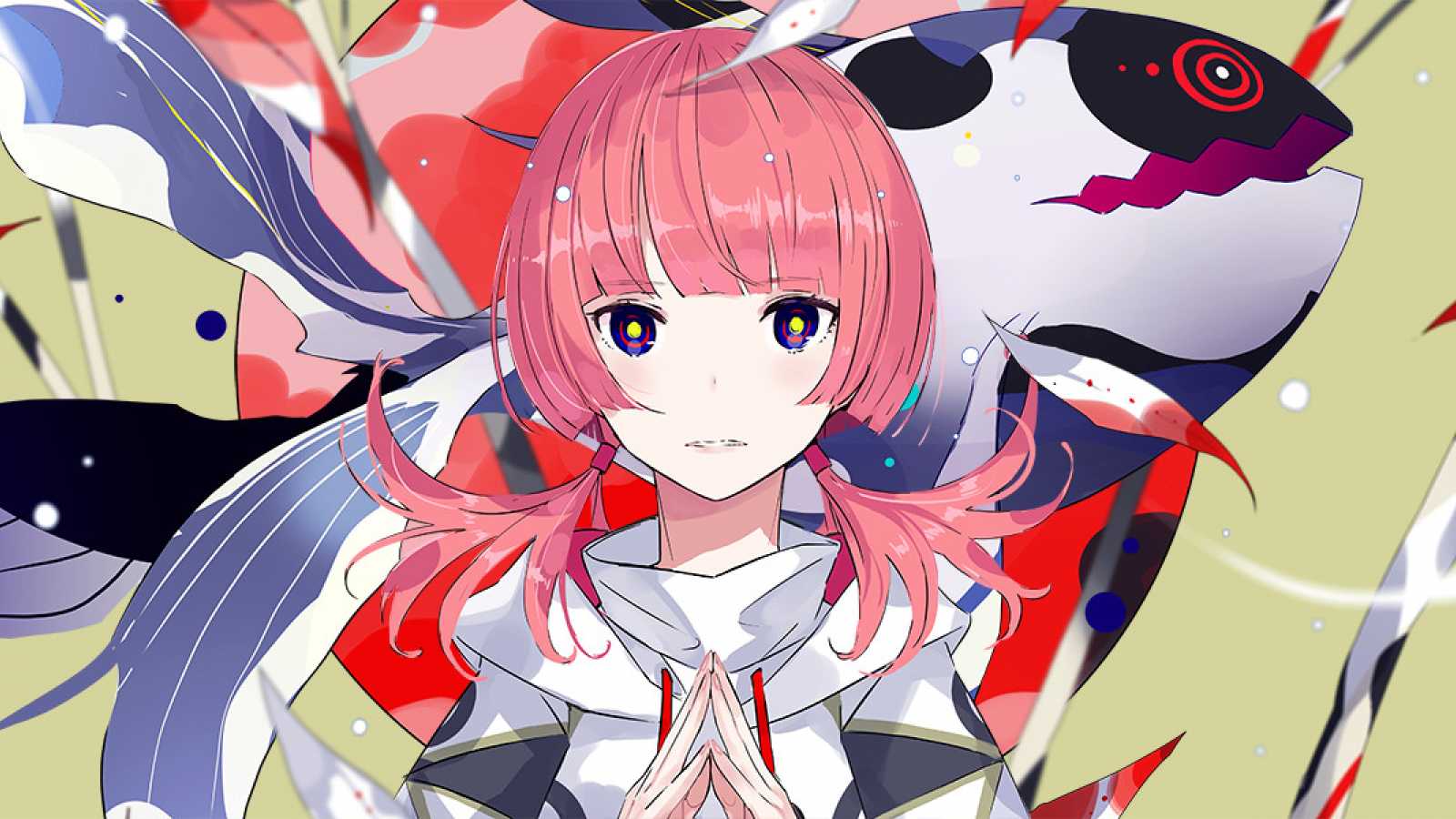In the summer of 1986, the members of Spitz entered higher education. It was at the Tokyo Zokei University of Art that Kusano and Tamura became acquainted with one another. Ono Atsushi then joined the band as drummer and brought the band’s total number to three. Calling themselves The Cheaters, the band felt that the most important thing was their impact on the audience.
The Cheaters then made their impact with their performance of 365 no March by Suizenji Kiyoko. Instead of the traditional enka, the band opted for a punk arrangement of the song. The band also covered a song performed by Banban, Ichigo hakushou wo mou ichido, in the style of Black Sabbath.
Due to the burden of being both the only vocalist and lead guitarist, Kusano recruited Nishiwaki Taku into the line-up, and with his suggestion renamed the group The Spitz. Kusano, an avid fan of THE BLUE HEARTS, was discouraged from the band’s activities when he realized that THE BLUE HEARTS had achieved the music style they desired, and so The Spitz disbanded.
In 1987, Kusano went on to study at Musashino Art University, but maintained his friendship with Tamura by often visiting the other boy’s house in order to play on the family's Famicom (Nintendo Entertainment System). Due to the friendly nature of these get-togethers, the two friends decided to resume activity with the band.
Although the two friends had decided to reunite, Tamura held a strong desire to recruit one more person into the band's line-up. Fortunately for the two young men, Tamura requested the help of another of his childhood friends, Miwa Tetsuya, who complied. It was with kind hindsight that Miwa requested the help of a fellow student whom he attended Bunka Art College with, Sakiyama Tatsuo. The pair knew each other closely through the college's folk song club and luckily, the man agreed. Another stroke of luck for this band was that Sakiyama had some experience under his belt from previous bands.
With the band's line-up finally complete, Spitz was finally able to begin activities. Starting that autumn, the band held performances in Shinjuku JAM, Shibuya La Mama and Shibuya Yaneura. At the beginning of their career, the influence of THE BLUE HEARTS remained apparent in their work, to the point that the booking manager of Shibuya La Mama offered the group some tough advice: "You have no future."
Additionally, Tamura grew frustrated with his style of playing, so he opted for an acoustic guitar instead. It was around this time that Spitz composed some of their classics, Koi no uta and Hibari no kokoro. Finally, it seemed as though the band was creating their own individual style, and in July 1989 the band held their first one-man live at Shinjuku Loft. The following March, Spitz released their first mini-album, Hibari no kokoro.
Nearly a year later, Spitz made their admittedly quiet debut with the duel release of their first single and first self-titled, full-length album. Unfortunately for the band, the boom of band music had come to an end and it was difficult for the group to garner any attention. However, despite their debut at an unfortunate time in the music industry, their uniqueness in the musical world did not go unnoticed as they were announced by ROCKIN' ON JAPAN as the "new wave of the 90s."
Initially however, Spitz held little admiration for the major artists of that decade and joked that they were "survivors of the band music boom." And in spite of their major debut, Spitz found themselves with copious amounts of free time thanks to an incredibly lenient live schedule. So, in order to keep themselves busy, the band dedicated their time to writing new material and spent a vast majority of their time in the studio. In late 1991 the band released their second album, and in April 1992 Spitz released their first orchestra arranged mini-album with Tomoki Hasegawa. The group also performed a recital on the day of the album's release alongside string musicians, but due to the death of Yutaka Ozaki on the same day, the mass media surrounding the event concentrated on the more poignant mystery of Ozaki's death.
With the release of their third full-length album, Spitz began to broaden their musical horizons. With their growth of enthusiasm in their chosen profession came the realization that they had yet to achieve a Top 100 position in the Oricon Chart. Although the band initially had little interest in chart positions, they began to feel a growing sense of guilt toward their recording company for supporting them all this time. The following year, Spitz began to work with their first producer: Masanori Sasaji.
With newly found confidence, Spitz began recording their new album and from March to August performed a monthly live concert at SHIBUYA ON AIR. The band concentrated on creating original themes for each concert and they were favorably received by those in attendance. Despite high hopes that their fourth studio album Crispy! would achieve higher sales on the Oricon, the album failed to gain popularity and Kusano lost faith in his writing ability and his voice.
The release of Kimi ga omoide ni naru mae ni, taken from the album, signaled the band’s first Oricon position and garnered the band some interest from the public. With the release of their fifth album Sora no tobikata, the band achieved a Top 20 position, with the album reaching the fourteenth spot. In the same year Spitz was the focus of some intense media coverage, with appearances on Music Station, POP JAM and Count Down TV.
In 1995, Spitz gained their first Oricon Top 10 with the single Robinson, which became the 9th top selling single of the year with sales of over 1.6 million. With Namida ga kirai, Spitz hit the number two spot on the chart and at first could not believe the success that was finally coming their way. Their popularity was made obvious to them when they attended the MEET THE WORLD BEAT '95 event in Osaka and received rapturous applause from the crowd.
October signaled the band's first full-length tour, with the group performing over forty concerts. In January of 1996, Sora mo toberu hazu was used as the theme song for one of Fuji TV network's affiliates and became the band’s first number one hit. This signaled the first of many hits for Spitz that year, with Cherry selling a phenomenal 1,610,000 copies. Their seventh album, Indigo chiheisen, was released in October and to accompany the release, Spitz began a strenuous tour schedule with roughly seventy dates.
In 1997 (the band's tenth anniversary year), their producer, Sasaji, withdrew from his position and the members began to feel as though they should no longer depend on their management forever. Determined to stand on their own "two feet," Spitz released their eighth album, which was co-produced by the band and Yuichi Tanaya. It was during 1998 that one of their most prominent support members, Hiroko Kuji joined the band on tours as their keyboardist.
1999 saw Spitz releasing a collection of songs that had not yet been released on hardcopy with the aid of producer Ryomei Shirai. The year also saw Spitz composing material on both their native and Western soil, with songs Haru natsu Rocket and Memories being produced in Los Angeles, U.S.A.
While the members concentrated their production abroad, their first best of album was released in Japan. RECYCLE Greatest Hits of SPITZ caused controversy as the band did not desire a compilation of their hits to be released until their disbandment. To their disappointment (and reluctance), the album was released to nationwide commercial success with over 2,000,000 copies sold. In an act of defiance, Spitz does not include the album in the discography on their official site!
Shokichi Ishida was hired as the band's producer in the year 2000 and the group began recording in earnest. Spitz appreciated the honor of working with one of their contemporaries, as Shokichi was well-known in Japan for his work on the album SCUDELIA ELECTRO. The result of this dedicated work resulted in Hayabusa, an album that saw Spitz breaking away from their more well-known image and pursuing more of a rock flavor.
Notably, since Sasaji's withdrawal, Spitz had relied on several helping hands in the production of their works, and in 2001 the band introduced Seiji Kameda as their new producer. Kameda is well known as the producer for Shiina Ringo and the guitarist in Tokyo Jihen.
The year 2003 was a quiet year for the band, and it wasn’t until 2004 that Spitz released Star Gazer, which climbed to number one on the Oricon. In March the band compiled their second special album, which includes songs that were entirely new to their back catalogue.
2006 was Spitz's fifteenth anniversary since their debut and the band released a complete singles collection in order to celebrate. The following year was the group’s twentieth anniversary since first coming together as a band and they performed at ZEPP TOKYO in August. With the release of their twelfth album in October and a full tour of Japan commencing in December, Spitz can be considered giants in the Japanese music industry, and with talent such as theirs, we can expect them to continue for years to come.



